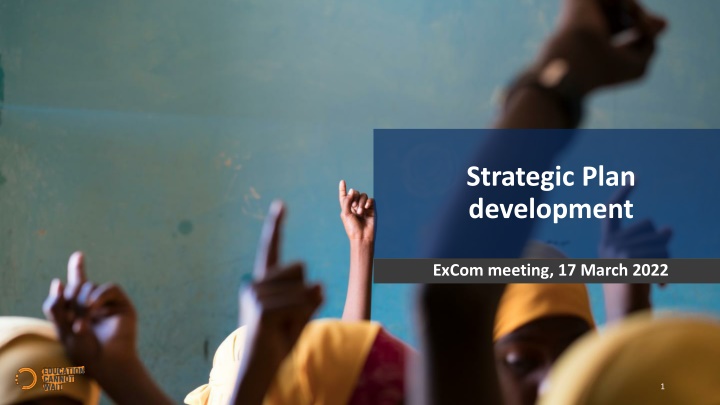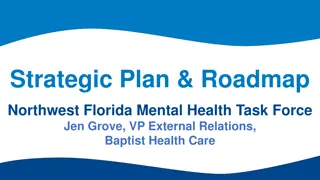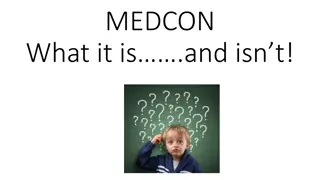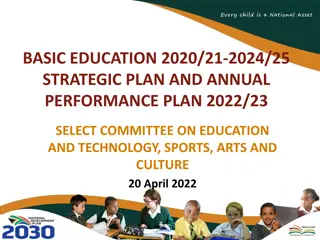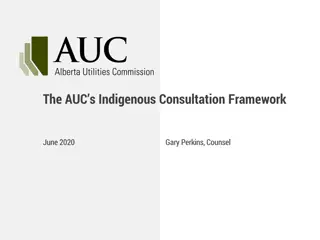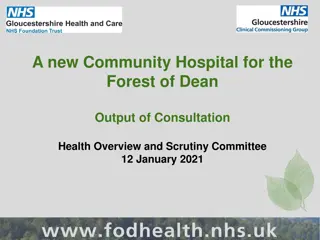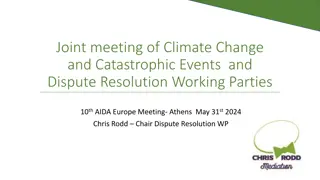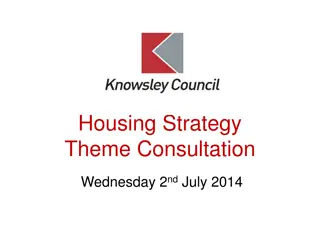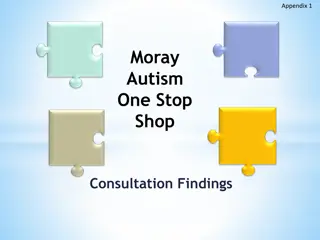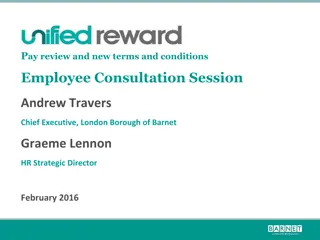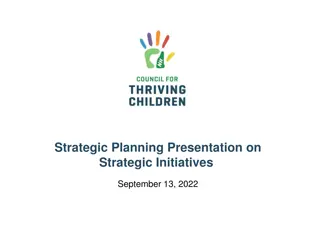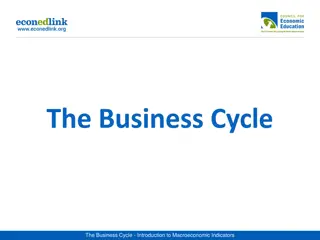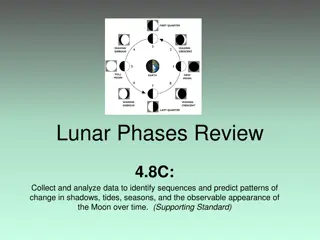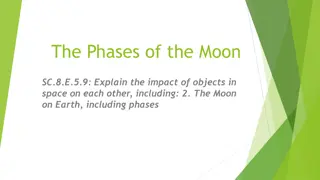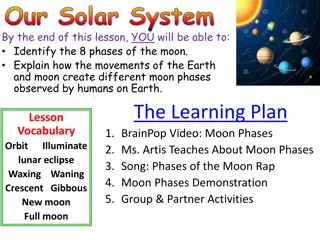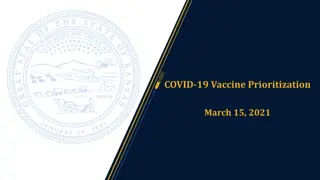Strategic Plan Development & Consultation Phases Overview
The strategic planning process for the ExCom meeting on March 17, 2022, involves key phases such as consultation, drafting, and endorsement. Activities include sharing reflections papers, stakeholder surveys, and finalizing the Strategic Plan for endorsement in September. The process also includes organizational evaluation, consultations, and feedback incorporation leading to stakeholder engagement and final endorsement. Next steps involve key agreements with ExCom on strategic directions and an upcoming in-person workshop in May.
Download Presentation

Please find below an Image/Link to download the presentation.
The content on the website is provided AS IS for your information and personal use only. It may not be sold, licensed, or shared on other websites without obtaining consent from the author.If you encounter any issues during the download, it is possible that the publisher has removed the file from their server.
You are allowed to download the files provided on this website for personal or commercial use, subject to the condition that they are used lawfully. All files are the property of their respective owners.
The content on the website is provided AS IS for your information and personal use only. It may not be sold, licensed, or shared on other websites without obtaining consent from the author.
E N D
Presentation Transcript
Strategic Plan development ExCom meeting, 17 March 2022 1
STRATEGIC PLAN: CONSULTATION PHASES 3 2 FINAL DRAFTING & ENDORSEMENT 1 RESPONDING TO REFLECTIONS & FEEDBACK JUNE > SEPTEMBER 16 June: First draft Strategic Plan to ExCom for review 10 August: Final Strategic Plan to ExCom for recommendation to HLSG to endorse 1 September: Final Strategic Plan to HLSG September HLSG meeting: endorsement and launch APRIL > MAY CONSULTATION 14 April: Reflections & Aspirations Paper shared for feedback April HLSG meeting: Seek inputs and non-objection to strategic direction 26 May: Share initial draft of key elements (TBC) with ExCom JANUARY >MARCH January/February: ECW Secretariat internal reflection workshops February/March: Bilateral discussions with stakeholders 14-31 March: EiEPC Stakeholder Survey
Strategic planning (SP) process Organisational evaluation January Consultations commence Update protracted crisis/country analysis Map global developments CONSULTATIVE PROCESS February February Initiate work on ToC, results-framework, gender performance indicators ECW Secretariat reflection sessions (internal) Share draft Inception Report (14 Feb.) (Mokoro) Incorporate ECW feedback and finalise (Mokoro) March March Begin shaping components of the SP, gender policy & accountability framework Prepare draft ToC and RF FINAL INCEPTION REPORT TO EXCOM FOR APPROVAL (4 March) Early April Share reflections paper with ExCom
Strategic planning (SP) process Organisational evaluation (OE) May May Prepare first draft of SP and incorporate ExCom feedback on the reflections paper Present emerging findings and issues to ECW Secretariat/stakeholders (9 May) (Mokoro) CONSULTATIVE PROCESS June June Share OE report with ECW (14 June) (Mokoro) Present draft OE report to ECW and stakeholders (22-24 June) (Mokoro) Submit draft Strategic Plan to ExCom July July Finalise OE report (Mokoro) Prepare ECW management response Incorporate ExCom feedback Reflect findings of the OE Report August: TO EXCOM FOR RECOMMENDATION TO HLSG TO ENDORSE September: HLSG ENDORSEMENT
NEXT STEPS Key pieces to be agreed with ExCom in the coming weeks: oHLSG note outlining broad strategic direction oIn-person ExCom Strategic Plan workshop in May Reflections & Aspirations Paper 14 April 5
REFLECTION REFLECTION 6
Overview of early feedback 1. Support for & recognition of ECW s achievements to date 2. Growing needs related to education & emergencies Climate, conflict and pandemics Possible response to needs associated with climate 3. Support for education in crisis FERs MYRPs Roles & responsibilities 4. Impact for children Quality and learning Thematic priorities The role of the Acceleration Facility 5. Operations Diversification Localisation The size, shape and role of the ECW Secretariat
1. Support for & recognition of ECWs achievements to date Universal recognition of what ECW has achieved in a short time Really put EiE on the political map Recognition of the value of ECW s advocacy Proven added value especially speed & agility Provided proof of concept Strong encouragement to commit to refining ECW s work and taking ECW to the next level
2.1 Growing needs related to education & emergencies The needs that ECW was established to mobilise more and better efforts to meet are only growing o Conflict o Climate o COVID19 (and future pandemics and epidemics)
2.2 Needs associated with climate change Strong and clear demand for ECW to set out its role in response to climate related disruption o Need to speak to the issue, which is a priority for many governments o Opportunity to access new, and align with, climate finance o Need to ensure its own support is climate sensitive How? On the continuum, strongest support is for ECW response to be climate positive
3.1 Support for education in crisis: FERs Lots of support for ECW s role in first response Ensuring education is supported in first stage response Encouraging others with incentive of seed funding Given growing number and impact of emergencies and crises there s a need to: o affirm FER window o commit to improvements o ensure the funding is available to deliver them
3.2 Support for education in crisis: MYRPs Strong support, mission critical value add for some Depth versus breadth Quantity, value, renewal Is it feasible to close the financing gap? ECW can do more to do so. Must agree and improve reporting. Funding needs to incentivise policy change as well as support programming Need to do more to steward grantees Lots of opportunity to identify lessons learnt and share them
3.3 Support for education in crisis: Roles & Responsibilities The gold dust will be in supporting the nexus, but this requires more thoughtful engagement and capacity There s work to do to agree roles and responsibilities with other actors Other funders including GPE, WB, Bilaterals, Philanthropy & Corporate Sector Co-ordinating bodies, including UNHCR This is both possible and desirable and will unlock so much potential and accelerate enormous progress
4.1 Impact for children: Improving quality and learning outcomes We really want to support ECW to lead the EiE community in the journey from improving educational access to increasing its quality to delivering verifiable learning outcomes Can ECW commit to improving learning in the next strategy?
4.2 Impact for children & youth: Thematic Priorities & the Acceleration Facility (AF) Strong support for the existing ECW thematic priorities Need to move from donor driven priorities to fully worked up and operationalised commitment to act on them More support and leadership, recognising that this means need for more capacity but we re prepared to fund that Strong support for ECW s role as a convenor and funder of global public goods via the AF, but needs to be more strategic with clearer lines of site to investments, programmes and commitments"
5.1 Operations: Diversification & localisation Lots of support for ECW to diversify grantees Also, lots of support for localisation, but this needs to be understood as more than just direct grant making to local organisations Support for that if possible but approach can be so much more Need to understand diversification and localisation are related but different Can we agree benchmarks, activities and indicators?
5.2 Operations: Size, shape & role of Secretariat Universal recognition that the ECW Secretariat is too thinly spread and needs to grow Strong support for doing so The next phase requires a more developed organisational structure, not just more people Priorities include country support and convening, grant management, policy, resource mobilisation, evidence and accountability especially for country level
Questions and Questions and comments comments ECW Strategic Plan inbox: strategicplan@un-ecw.org
